-
Posts
4,741 -
Joined
-
Last visited
-
Days Won
119
Content Type
Profiles
Forums
Resource Library
Events
Gallery
Blogs
Store
Community Map
Posts posted by Mayner
-
-
On 2/8/2024 at 3:39 AM, Johnny B. Good said:
The Midland Great Western had a two rectaangular tank wagons 1108 & 1967 used for cresote traffic between the North Wall and Liffey Junctionsleeper depot and cresoting plant. The Midland bought a pair of RCH pattern tanks (5'8" diameter) for cresote traffic from Charles Roberts in 1915. Its possible both types may have lingered on in service into CIE days. (Notes MGWR Wagon Stock P O'Cuimin IRRS Journal 1969?)
Haven't seen a photo of either type of wagon, its possible that the other large companies may have used similar wagons to transport cresote from the ports to their cresote plants.
-
 1
1
-
 1
1
-
 2
2
-
-
1 hour ago, Killian Keane said:
Built from GEM "Special Tank" kit unmotorised. Similar in general outline to the Greenore locos, but tank version of the LNWR 'Coal Engine" that had smaller (H Section) wheels and a straight running board, while the Greenore engines were conversions of the DX which had largerwheels and crankpin splashers. The H Section wheels had flat spokes used on some GSWR and LNWR classes.
Following Andy Cundicks example of marrying a Brassmasters "Special Tank" with their DX underframe running board would be a better option for producing a Greenore engine especially in 21mm. Tried to convert a GEM Special Tank into a 21mm Greenore loco about 40 years ago but was not a success.
-
 2
2
-
 1
1
-
-
The Sat Nav and Map could be set with different National/Regional accents. The wife (American/Ozzie) used to get a great kick out of a 'Australian Lass' giving us driving "directions" in the States and 'her" pronounciation of Kiwi place names. Not sure how AI would cope with Irelands numberous regional accents and dialects
-
Finally managed to complete the assembly of the replacement tender platework and fitting the detail castings.


Pinning and gluing the springs seemed to have worked out neater than my previous attempts with low melt solder.
The buffers and axleboxes are soldered from behind. The brass became quite tarnished after soldering compared to other of my models, possibly using the dreggs at the bottom of my flux bottle! I mix my own flux using distilled water and dilute phosphoric acid (available as Ranex Rust Buster in this part of the World.)
I ended up removing the tarnsish and verdigris with tootpaste and an old tooth brush which seemed to do the trick.

Tender chassis complete with brake gear from the original tender.
Last major jobs on the loco to fit vacuum ejector pipe, vacuum pipes, number plates, transfers& screw couplings front buffer beam and tension lock couplers to tender.
Daytime temperatures are a bit cold for spray painting as we are currently getting a blast of winter weather as we flip flop in this part of the World between warm wet-humid and cold dry weather conditions on an almost weekly basis.
-
 10
10
-
-
I had a similar experience to your Braclay with an EM saddle tank about 15 years ago and ended up having to replace both the driving wheels and coupling rods to salvage the loco. I 'overfettled' the rods and made them unusable in attempting to ease a 'tight spot' in the quartering and later realise that I could not achieve sufficient clearance between the coupling rods and slidebars/crosshead with the existing wheels & cranpins.
The loco is a non-runner on 'static display' on its original wheels these days, while it waits its turn in the Workshop. My EM stuff is failry low priority in comparision with my Irish and American stock, the loco has been a 'slow burner" bought over 20 years ago before we migrated to New Zealand, a lot of the assembly carried out in Motel rooms during the American phase of our journey, I have had the replacement wheels and complete with a set of recessed crankpins in stock for about 5-6 years but haven't gotten around to completing the loco.
Hopefully I'll will be able to find the parts when I eventually get round to completing the assembly of the loco!
-
 2
2
-
 1
1
-
-
8 hours ago, patrick said:
Sure looks like the Prairie!
The Bachmann Big Haulier cars are great value and look the part. Looks like you managed to find yourself an Aristocraft Delton C16 2-8-0 pretty rare these days I suspect!
I bought a circle of LGB track a loco and a caboose to get something running quickly in the garden as a distraction from my Irish modelling about 17 years ago, and ended up with a large 'collection' of American Large Scale locos and stock and still haven't gotten around to starting the Irish layout, mighty addictive stuff!
-
2 hours ago, minister_for_hardship said:
"A Decade of Steam" on CIE in the Fifties" Donaldson,O'Neill,Mc Donnell published RPSI early 70s William McDonnell operating manager Cork notes "The cab was big and roomy but even so rather warm,-one wonders that, in such a well finished engine, the faceplate was not lagged" .
I don't recall seeing a lagged faceplate on a preserved steam loco (at least narrow gauge) in the UK
-
 2
2
-
 1
1
-
 1
1
-
-
1 hour ago, Mike 84C said:
I like the 201 Class 0-6-0T (converted from a Hornby J83?) basically tank engine version of the J15 appear to have been mainly used for shunting in Dublin and Cork and passenger and goods trains on the West Cork.
A 201 apparently converted from a Tri-ang Jinty appeared in series of articles on building corrugated iron buildings from card in the Railway Modeller in the early 1970s. The shape of the cab roof was the give away!
-
 1
1
-
-
Presumably before anything happens the Northern Ireland Assembly would first have to approve the reports recommendation to re-build Portadown-Derry and both the British and Irish Government's approve (provide funding) for the rebuild. The cost benefit of 1:1 for the project bascially means for every £1 spent on the project results in a return of £1 to the economy not that the project breaking even.
While Irish Governments tend to take a pragmatic approach to their economic and social policy, British Governments tend to flip-flop between centre left and centre right positions on economic and social policy.
Would an incomming Conservative Government or Conservative-Liberal Coalition potentially cancel the funding for a rebuild of the Derry Road on idealogical grounds in a similar manner to the current centre-risht New Zealand Governments cancellation of rail and infrastructure projects approved by the previous centre-left Government?
-
 2
2
-
-
1 hour ago, jhb171achill said:
They certainly LOOK like they are in them, all right.... and, while I could be completely wrong on this, I do have an idea that i've seen other pics of these types of older (smaller) containers inside open wagons. Must have a delve! My curiosity hath been suitably piqued; but I'm off to the Island of Man in the morning, where there doth be steam, so it'll not be for a few days..........
I think its more to do with Bachmann BR containers not fitting in Leslies Corrugated Opens rather than containers being carried in CIE open wagons. There are several photos of BR Containers in CIE/GSR 'Standard' wooden bodies opens, but hadm't seen any in corrugated apart from the Heuston Goods photo.
The strapping/hinge detail of the Bachmann containers is a bit heavy and I had to carve the raised detail off the containers to fit in both my and SSMs models of the "Standard Irish' Open Wagon.
-
 2
2
-
-
Back to 664 again although the loco appeared complete and ready for the paint shop at the last posting, I could not achieve a satisfactory finish to the tender despite stripping the paint and further particularly around the tender springs.
So in the end I took the drastic step of replacing the tender body and outside framing.

Main problems were a minor dent in one side of the tender tank and excess solder around the tender springs which was particularly noticeable when painted.
The tender used with the K Class and other Atock designs introduced in the 1890s had a springing/suspension arrangement similar to the LNWR 'Bloomers" introduced in the 1850s rather than contemporary late 19th Century practice where the springs were placed outside the frames. https://preservedbritishsteamlocomotives.com/2-2-2-lnwr-bloomer/ I was surprised when saw a fuel tank on what appeared to be a tender chassis with similar springing arrangement when I visited Machynlleth MPD in Wales during the 1980s.
Its possible Atock used this springing arrangement as he did not wish to have the tender footplate/tank projecting outside the loco frames.
The masters for the springs were originally designed with locating pins intended to fit into holes in the sideframes, but were not practicable to cast in whitemetal due to the small size of the pin. My usual practice was to solder the spring hanger to the frame with low melt solder which formed a thin film over the frame not really noticeable when painted except for 664!

Applying a little lateral thinking I decided to try drilling, pinning and supergluing the springs to the frames!
I picked up a pack of miniature drills at the local hobby shop which appear to be of excellent quality though of no info on the supplier or sizes on the pack! So far I have successfully drilled springs for one side with a 0.5mm drill in a small hand drill.

Pins are .45mm brass bent to an L shape and soldered into the etched holes in the outside frames.

Springs for one side superglued to the pins. I will probably reinforce with a dot of epoxy behind the hangers
-
 10
10
-
-
2 hours ago, Irishswissernie said:
4 John Dewing slides today. It appears that GNRI practice on the Dublin-Belfast Main re ballasting was to pack the sleepers with ballast underneath the chairs/rail but leave a depression on plain track in the middle possibly to assist drainage. Interesting detail to model along with a line of new or re-placed sleepers (its hard to tell which) on the last photo.
GNRI 1963-05-19 Wellington Bank 91 JGD630606.
GNRI 1963-05-28 Belfast GVS WT54 JGD630620.
GNRI 1965-07-11 Laytown JGD651110.
GNRI 1964-06-02 Mount Pleasant 54 JGD640425.
"Centre cess" drainage with the drain in the centre of the 5' appears to have been commonly used in Ireland up to the 80s. The same arrangement was used in the cuttings on the Islandbridge Junction-North Wall line and on the Cork Line at Stacumny Bridge between Lucan Nth and Hazlehatch. (Cyril Fry H Stacpoole collection) 1961 photo of green B110 on an Up Waterford passenger Irish Railways in Colour a Second Glance" (Midland Publishing 1995
Practice probabably ceased with the introduction of mechanised track maintenance from the 1970s onwards, would be challenging to model!
-
 1
1
-
-
3 hours ago, gibbo675 said:
The CIE and GNR AEC railcars were virtually identical visually. The main difference was operational the GNR railcars could only run in multiple with 2 power cars generally running 2 or 3 coach trains while the CIE cars could run in multiple with 4 power cars with a maximum train length of 8 coaches. The GNR and CIE versions used different types of train heating boiler.
-
 2
2
-
 1
1
-
-
-
The two UTA AEC Raicars 6&7 which entered service in 1951 were built in Belfast and different in design and outline from the GNR & CIE AEC railcars. The bodies were converted from ex-NCC 1920s built coaches and the mechanical design anticipated British Rail DMU practice with the engine mounted horizontally.
While 6&7 had 'open' plan seating layout and end gangways, they usually ran as a 3 cars set with an non-gangwayed compartment coach. The bodywork of 6&7 appeared dated compared with the AEC built railcars being similar to 1920s built coaches with raised panneling. Worsley-Works produce a set of parts for 6&7, Kirley who posts these days on RM web may have produced a model of 6&7. Colm Flannigan "Diesel Dawn" unreavels the UTA railcar story
The terms of the GNR break up required the locos and stock to be devided evenly between CIE and UTA with each getting 10 ex-GN AEC cars and 12 BUT cars, one theory was that it would have been more efficient for UTA to acquire the entire fleet of 24 BUT cars and CIE to add the 20 AEC cars to its fleet.
Main difference operationally was that the control system of the GN AEC cars could only control two power cars, while the control system of the CIE cars could control 4 power cars. Allowing the GNR to run 3-4 coach trains, CIE up to 8 coaches.
-
 1
1
-
 2
2
-
-
There were some signs of rot (after 16 years) to the trackbase of the recently lifted section of track, so I decided to replace an entire 4.8 meter section on the basis that the trackbase should be good for another 10-15 years, by which time we may have moved home or I may no longer be capable of playing trains or have keeled over.
Turned out rot was mainly superficial on a section of board where I made the mistake of leaving the grain facing upwards.
A real consolation was there was no sign of decay to vertical section of the T or L girder and the supporting piles.
Replacement section with cut ends treated and ready for installation. Timber is wet pressure treated and stress graded for external use in decks, pergolas and car ports and needed to people to lift it on to the roofrack of the van at the builders merchant.
Replacement section installed ready for track-laying.
I will dress up the edges with some old trellis rail I have in stock, which I may eventually use to retain ballast. This section of the layout was originally loose ballasted with 6-8mm washed pebble which was washed away after several years exposure to the weather. On other sections ballast is bonded with PVA (sold in 5Ltr containers as concrete bonding agent) which has held up well in certain areas and less well in others.
-
 9
9
-
-
It might be worth while contacting the relevant Irish Rail "Infrastructure Managers' Office https://www.irishrail.ie/en-ie/about-us/iarnrod-eireann-infrastructure/infrastructure-contact-details
CIE used to be helpful to enthusiasts/modellers requests for drawings of locos, stock, buildings and structures.
As far as I recall (1970s-80s) drawings for buildings and structures were held at the regional Civil Engineers (Infrastructure managers) offices and enthusiasts were allowed to view drawings by appointment, though digital copies may be available these days.
-
 1
1
-
-
I remember reading in one of the IRRS Journals (1970-80s!) that a pair of Class were allocated to Ballina as Pilot (shunter) and Branch Passenger loco during the late 50s-early 60s, but likely to have gone by 63 when Limerick-Sligo passenger trains were diverted to Ballina and the Branch Passenger service abolished and Manulla Junction closed as a station.
C Class were also used for Pilot Duty at Sligo and Galway, there is a nice 1960 photo of a (very clean) light green C229 shunting a Horse Box & 4w Post Office van at Sligo in Barry Carse Colourpoint Irish Metrovick book.
Padraig O'Cuimin wrote about C Class presumably Galway or Athlone pilot loco deputising for G611 Class on Loughrea Branch Mixed Train in his book on the Loughrea and Ballinrobe Branch lines.
As JHB said CIE locos were centrally rostered and with the possible exception of the B101 Class (Waterford and Southern Section main-line locos could appear almost anywhere on the system.
-
 2
2
-
-
3 hours ago, David Holman said:
Barely a straight line anywhere. Lovely!
One of the planning conditions of the Harlequin (now Atria) Centre development in Watford during the late 80s was the restoration of a number of 'Listed Buildings" some of which dated from the 15th Century.
One of the options offered by our restoration specialist was to remove and restore some of the 'Tudor era" timber framed buildings in their 'as-built' stage with the framing members plumb and level or in their 20th Century 'Listed ' state with barely a plumb or level line. English Heritage opted for the latter!
Interestingly some of the historians got very excited when they found evidence of wattle and daub construction dating back to the 15th Century or possibly earlier in one of the building.
-
 1
1
-
-

The native "Bush Cockroach" a that occasionally wander inside are not considered to be a pest in this part of the World, but so far no one has been able to explain that to the cats who hunt them down to the state that I have seldom seen one in the house dead or alive in recent years.
Though funnily enough the hedgehog (an introduced species in Aotearoa (NZ) is classed as a pest as they are very good at hunting down and eating native wild life.
The other half discovered that there was a 'mouse problem" in the old family home in the States when she began caring for her father last year and adapted "James the cat" who after he spent 6 months at the local animal shelter.
James did an excellent job hunting down and eating 28 mice during the first 4 weeks since his adaption, and has now become a pampered house cat and much loved member of the family both in the States and Aotearoa. The challenging bit will be whether to find a new home for James in the States or to integrate him into the family (including spending 6 weeks in quarantine) with 4 other cats after my father in law moves into a care home in the States during the next 12 months.
-
 1
1
-
 1
1
-
-
There is a story that the Captain of the Rosslare Golf Club or some other local bigwig used to go into the loco shed and shut down the idling Rosslare Harbour C Class Pilot loco that was disturbing his sleep. Local staff were unable to re-start the loco disrupting shunting operations.
Eventually an order was sent out from Inchacore to lock the door while the loco was idling in the shed overnight.
-
 5
5
-
-
One of our guys earned his keep today, though not convinced it was Topaz who seems to be posing for his Facebook Profile picture.
Not the brightest of rats we have a family of 4 rescue/stray cats who operate like a mafia 'family' a Boss (tabby)who spends most of his time sleeping, a Consigliere (Grey Burmese cross) the "brains' that organises things and patrols the neighbourhood, a respectful "Foot Soldier (possible silent assassin) (Black Burmese cross 1/2 brother of Consigliere and Topaz the young punk that occasionally challenges the Consigliere, but not the Boss.
It all started out when we adapted the tabby from an animal rescue, the other 3 members of the gang showed up as strays over two-three years and were gradually adapted into the gang.
-
 5
5
-
-
2 hours ago, MAL said:
I think about to cut the buffers and mill the beam.
The bulleids need to be fixed in a jig I have to build to avoid unneccessary damages.
The only problem I have is that I have not yet found buffers as detailing parts (white metal or such) which are British/Irish enough and 1/76 scale to be mounted in wide spacing. My knowledge about detail parts and sources is 90% US and 10% Germany.
Does anyone know a source of buffers that would look good enough to be applied to the bulleids? THey do not need to be 100% accurate but should be of a good size and similar shape. The 1/87 buffer I have here are a bit too tiny and look too German or completely different.
Any hint will be appreciated. Thanks in advance
A number of British suppliers including Alan Gibson Works (AGW) http://www.alangibsonworkshop.com/and Dart Castings https://www.dartcastings.co.uk/ produce 4mm -1:76.2 scale buffers and detail parts.
There may be no direct British equivalent of the buffers fitted to the CIE H Vans and Bulleid wagons.
David Malone who published a number of articles on modelling Irish Railways to P4 Standards in the 80s and 90s turned his own buffer bodies (brass) and used Alan Gibson buffers heads and springs in models of the early version of the CIE H Van and the Corrugated Open Wagon.
The abstracts are from RailModel Digest which was published for a short period during the mid -late 90s
David notes that sagging buffer heads were often a feature of Bulleid wagons and H Vans!
If you consider correctly positioned buffers important enough, one option for re-producing these buffers may be to use Gibson or Dart (MJT) buffer heads in conjunction with a brass "lost wax" body reproduced from a 3D modelling file.
Some precious metal/jewellery suppliers have the capability to cast from a 3D modelling file. Some of the detail castings I use in locomotive kits are cast in brass from 3D prints or direct from a stl. file, eliminating the brittleness problem inherent in resin prints
-
 1
1
-
 2
2
-
-
Internationally is a lot of controversy these days about free speech and censorship people not being allowed to express their views.
One of the risks is that some postings particularly if they regularly single out or criticise another individual could be getting close to cyber bullying even if that is not the intention, requiring the moderators to intervene.
Although we have an excellent free (no subscription) add-free Newsgroup there are two important things to remember before posting on the group .
1. The Newsgroup is owned and controlled by Irish Railway Models, rather than being an independent group.
2. Posters are required to abide by the rules of the group in the same way as free speech is governed by the law of the land in most Western Democracies
-
 6
6
-
.png.c363cdf5c3fb7955cd92a55eb6dbbae0.png)

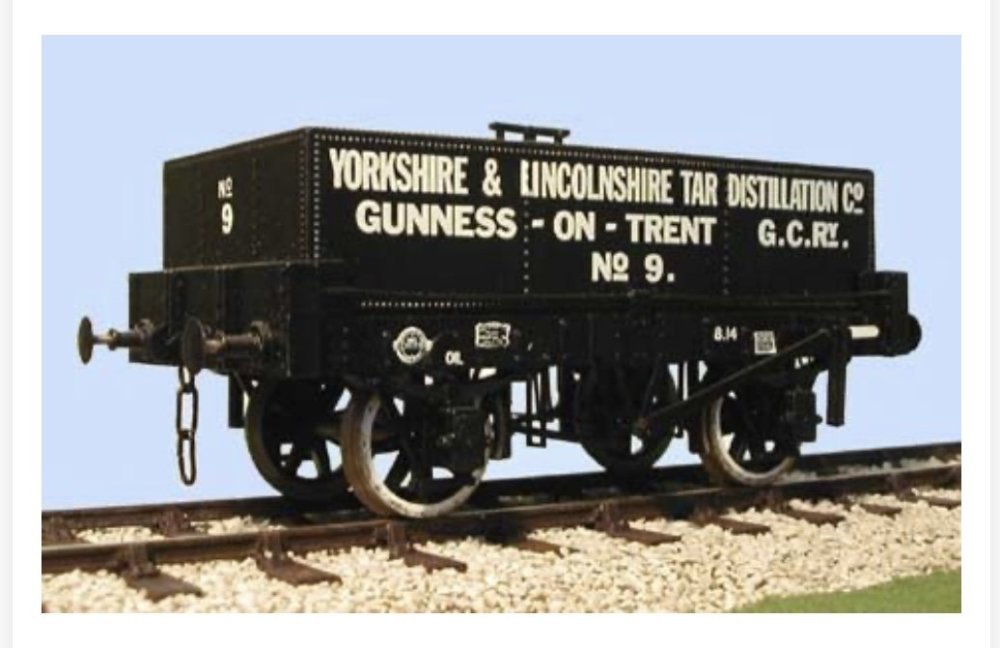

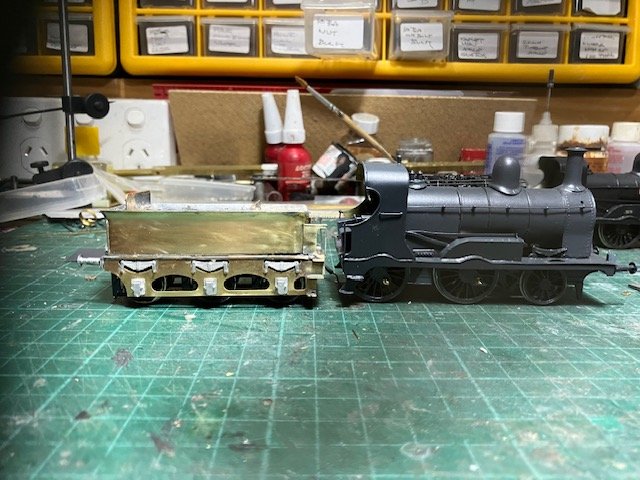
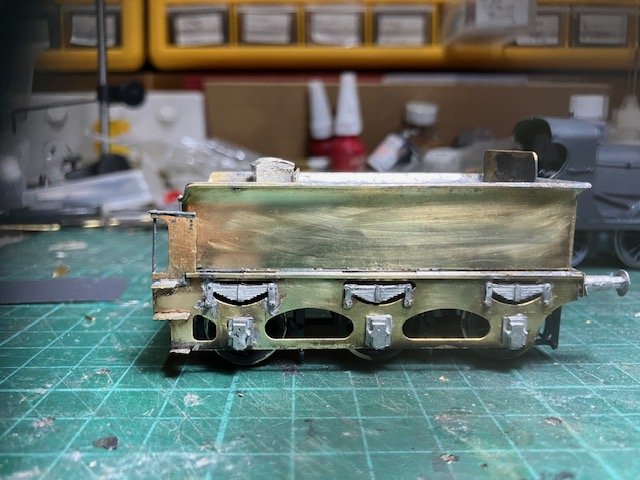
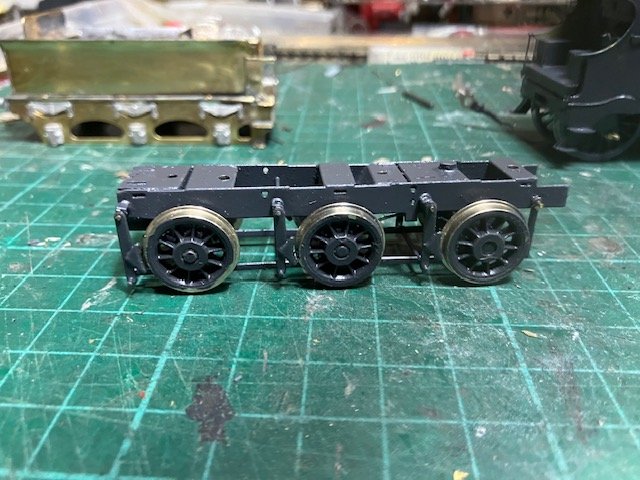
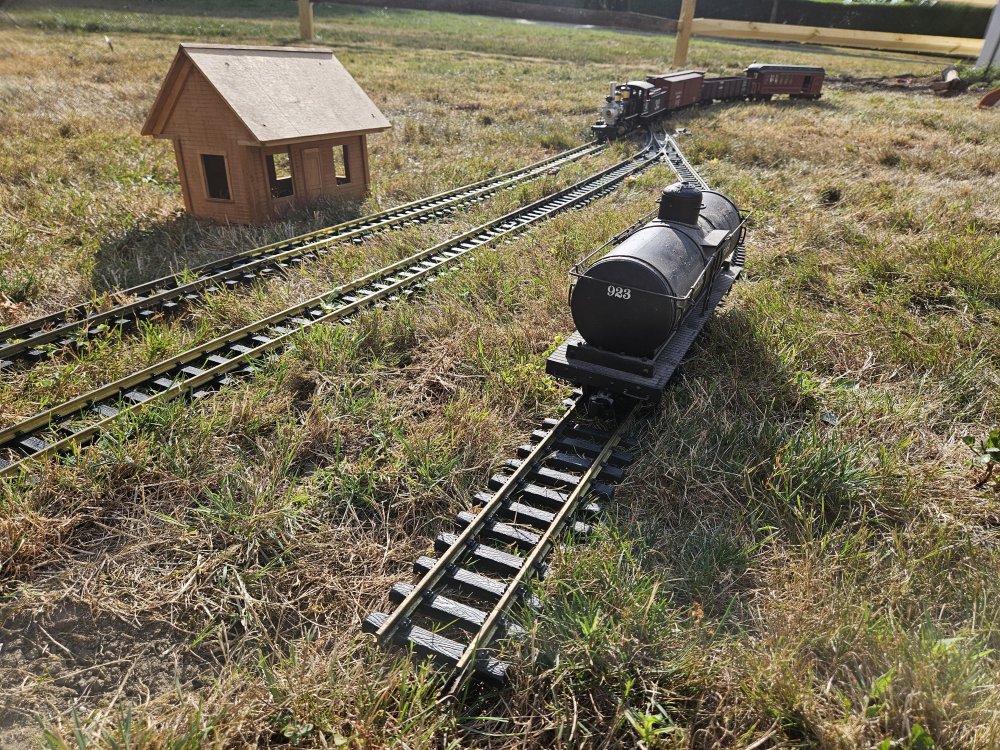

.thumb.jpg.aa31025381b06cafeff0fb1ee0423955.jpg)


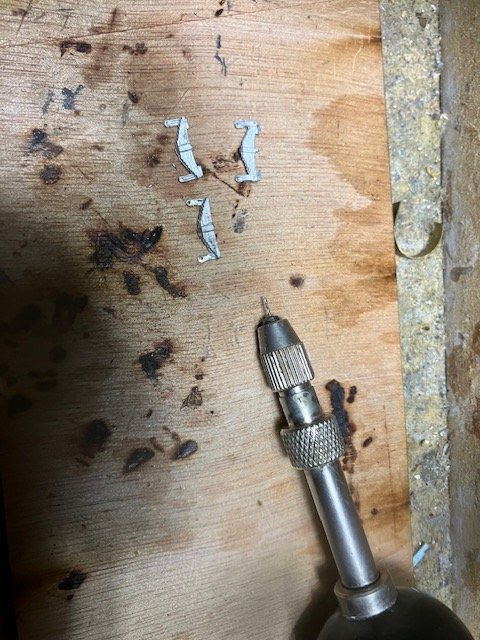
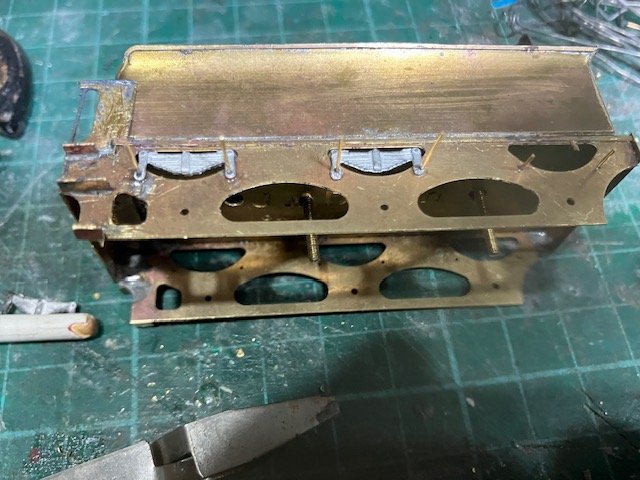
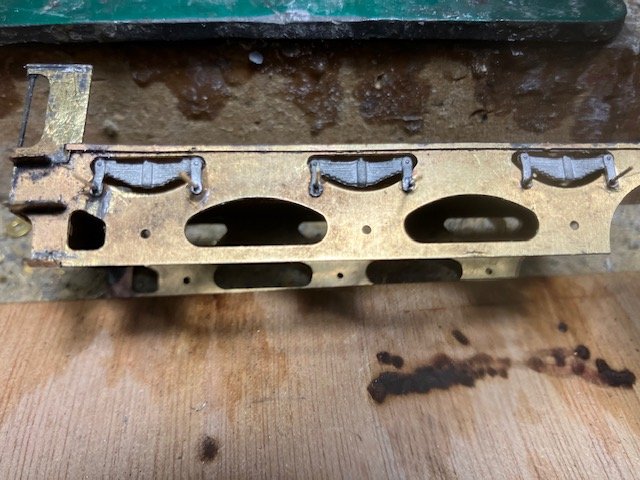


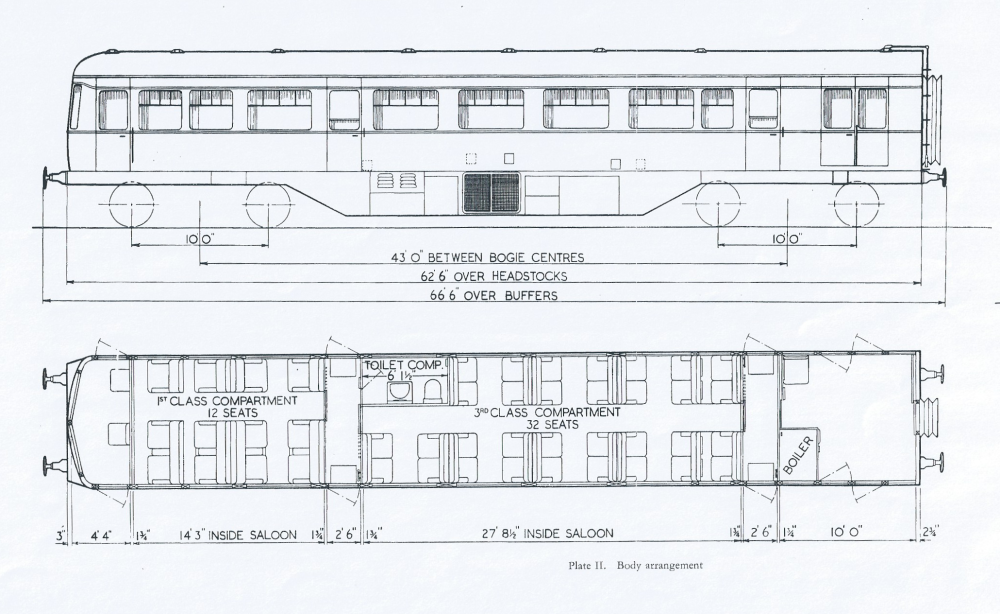
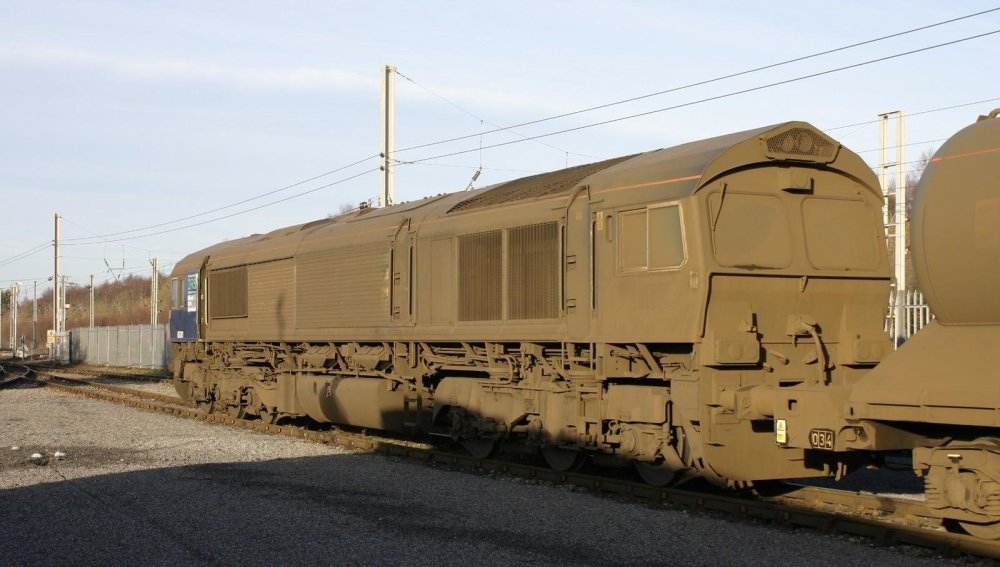


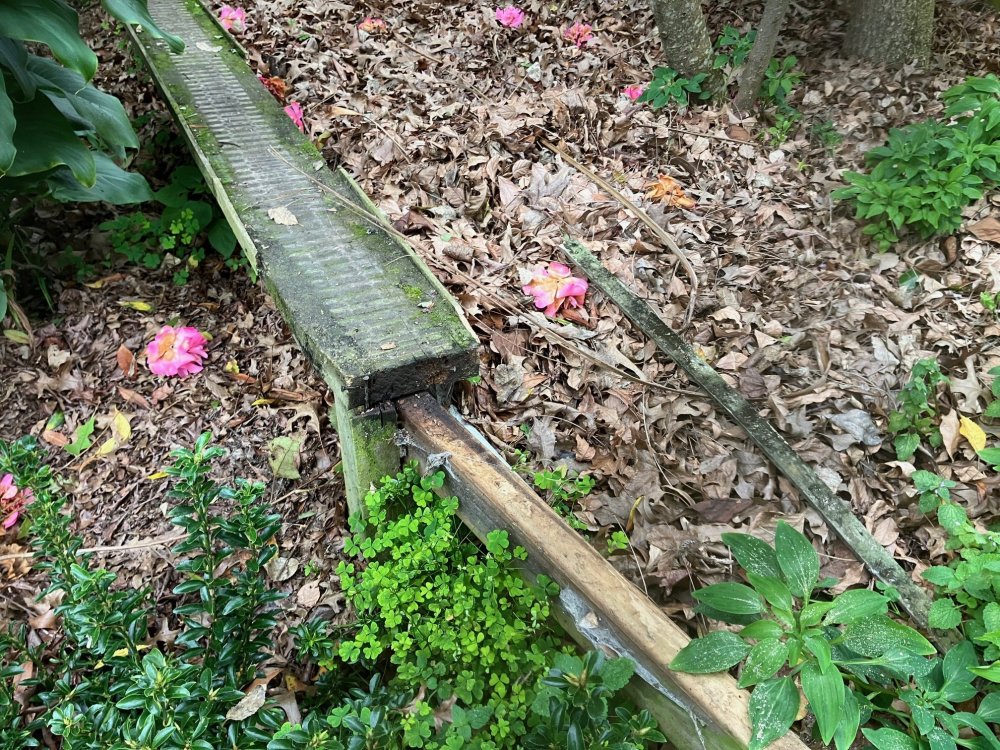
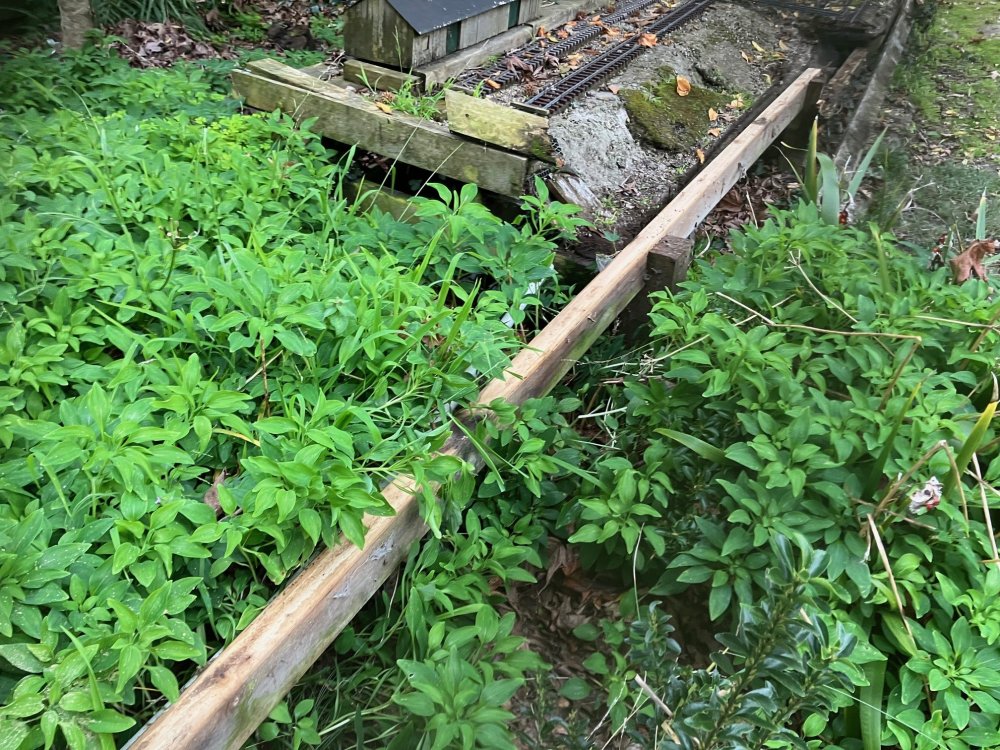
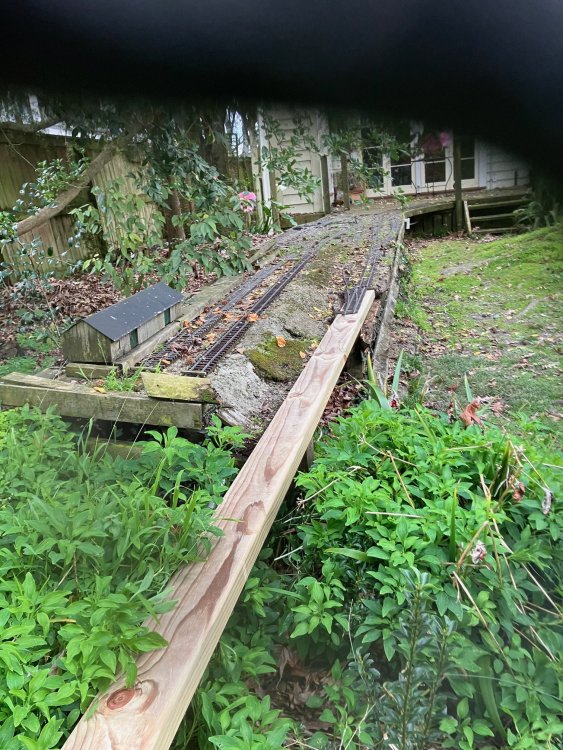

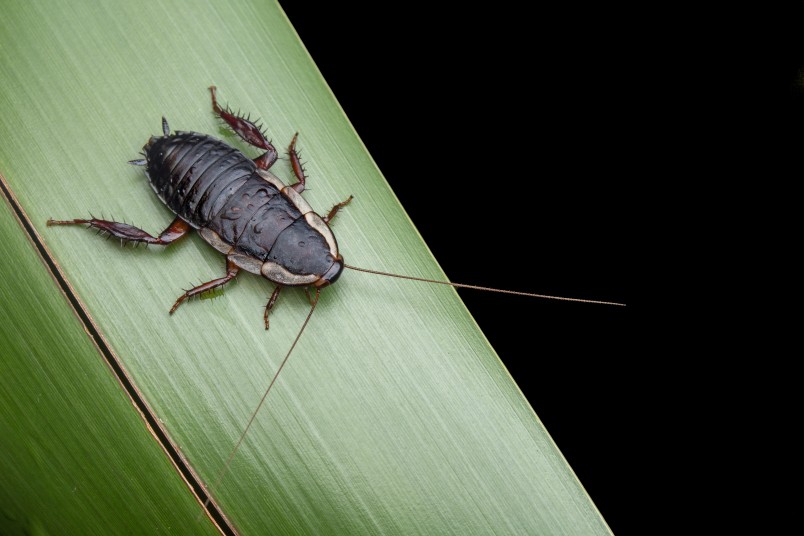
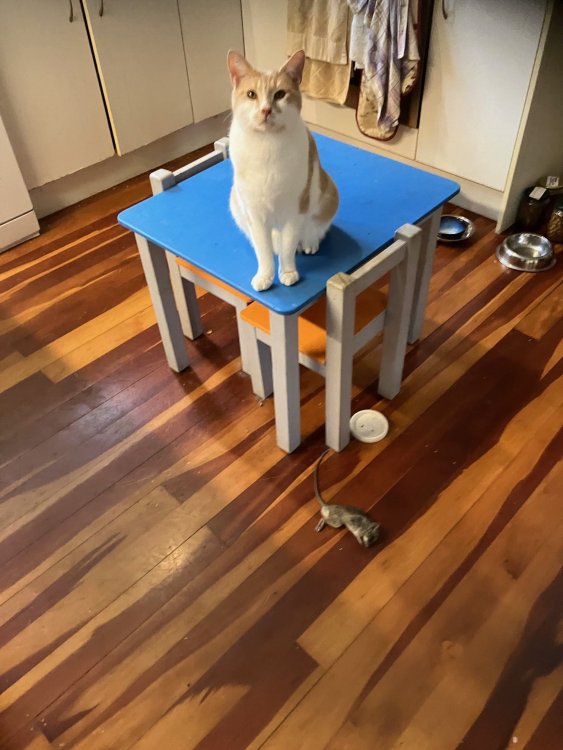
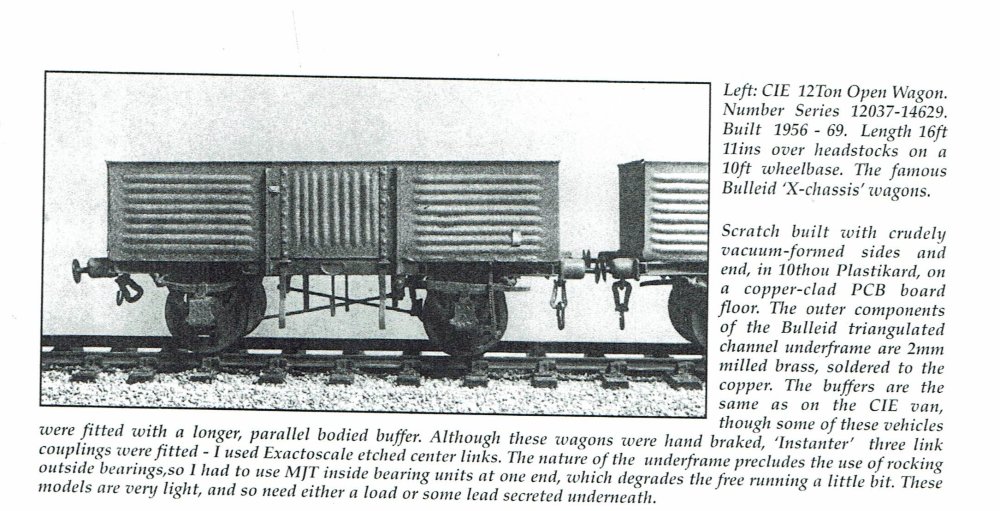
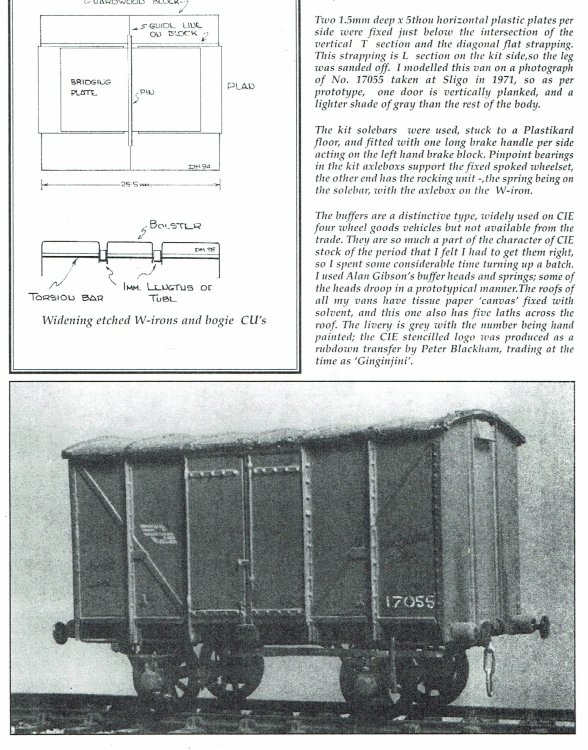
British locos and stock that can be disguised as Irish
in Irish Models
Posted · Edited by Mayner
The Loughrea fueling tank appears to have used the tank once used on the West Clare mounted on a 'modified" Ballast Wagon. quite unlike the purpose built rectangular tank wagons used for tar traffic in Great Britain.
There were rumours that the tank may have originally used for oil firing steam locos during the 1947 Fuel Crisis, the conversion does not appear the most professional with planks and timber packers apparrently supporting the tank brackets as opposed to a more engineered approach likely to be adapted by Inchacore or Limerick
Not sure if JHB was thinking in terms of tank wagons in general that tank wagons were extremely rare in Ireland and almost all (with few exceptions) used for railway use.
While generally true of the post 70s Block Train era where ESSO Claremorris, Irish Cement and Burmah were the main revenue commercial oil traffic sources, the Major Oil Companies and their Irish Distributors distributed their product by rail as wagons loads from the Ports in private owner tank cars until replaced with a road tanker fleet duirng the 60s-70s. Much of the traffic would have been single tank cars to oil depots at relatively small country stations in similar RCH pattern tank wagons to those used in the UK. Most companies had rail served terminals on Dublin's Alexandra Rd tramway, Irish Shell & BP its own Planet diesel loco.
Many of the wagons appear to have been a 1927 (UK) RCH design, though Caltex invested in a fleet pf 'modern" anchor mounted but unfitted tank wagons in 1960 and ESSO imported vacuum fitted wagons from the UK in the late 60s for its Sligo, Claremorris and a short lived Oranmore traffic flows.
While the companies invested heavily in new high capacity tank wagons for use in Great Britain during the early 1960s, the old wagons soldiered on in Ireland until late 60s/early 70s. Esso used modern but essentially obsolete wagons from the Britain for its traffic to the West.
Its possible a re-liveried Oxford tank wagon may pass for a 'typical" Irish company wagon.
Mex (Mc Mullen Bros?) Class A tank (two compartments different grades of petrol or petrol and TVO?)
Another Class A (highly flammable) wagon dumped/stored at East Wall late 1990s
ESSO logo just about visible Class B (Diesel, heavy fuel) Black
Makers photo Shell-Mex Northern Ireland
Many of the old private owner wagons in the South ended up stored/dumped near Sheriff St Signal box North Wall and may have been used for departmental use before scrapping.
At one stage the Alexandra Road-Inchacore fuel train was made up of 1960 Clatex-Texaco tank wagons with Caltex 'grinning: through the Texaco marking.